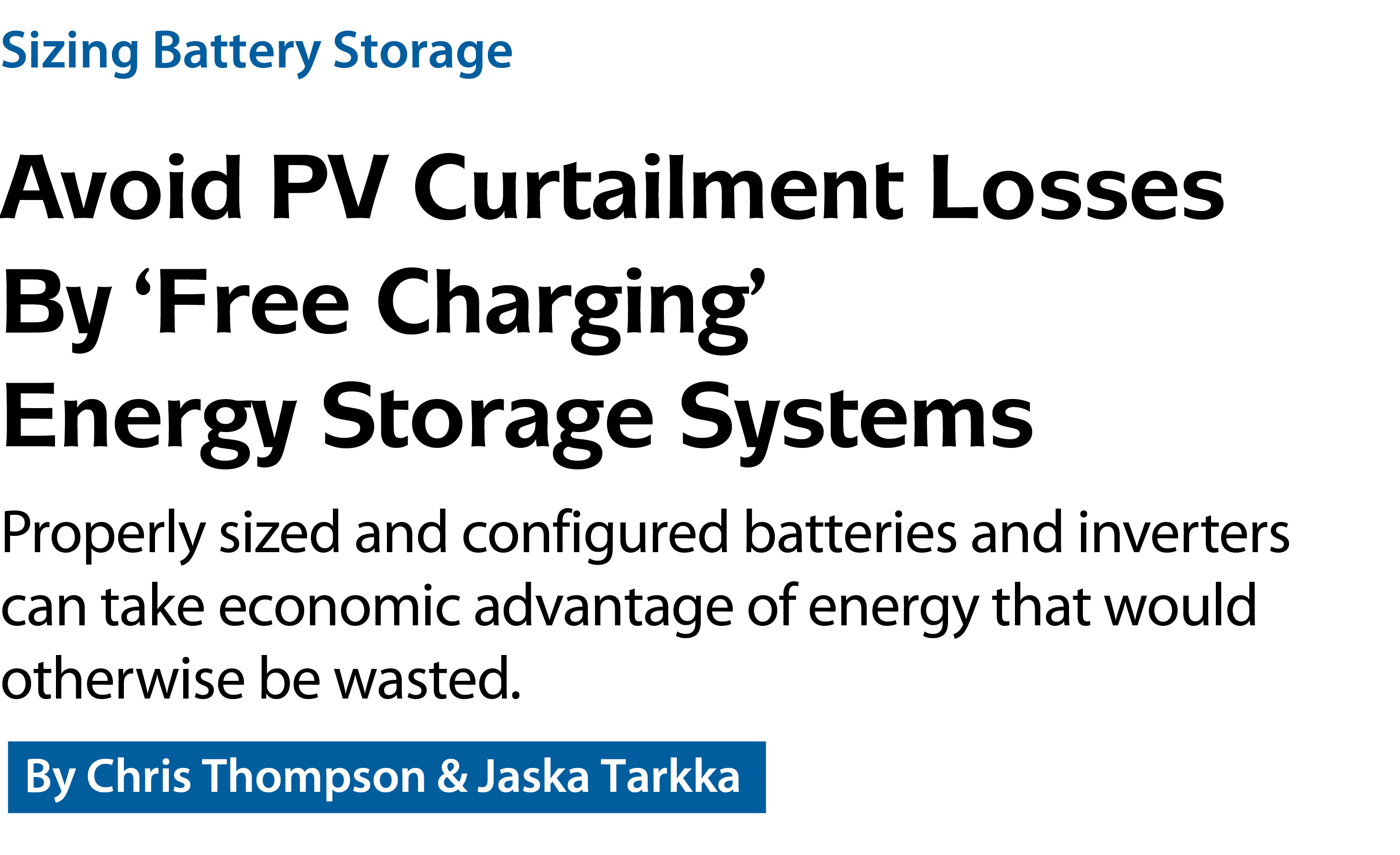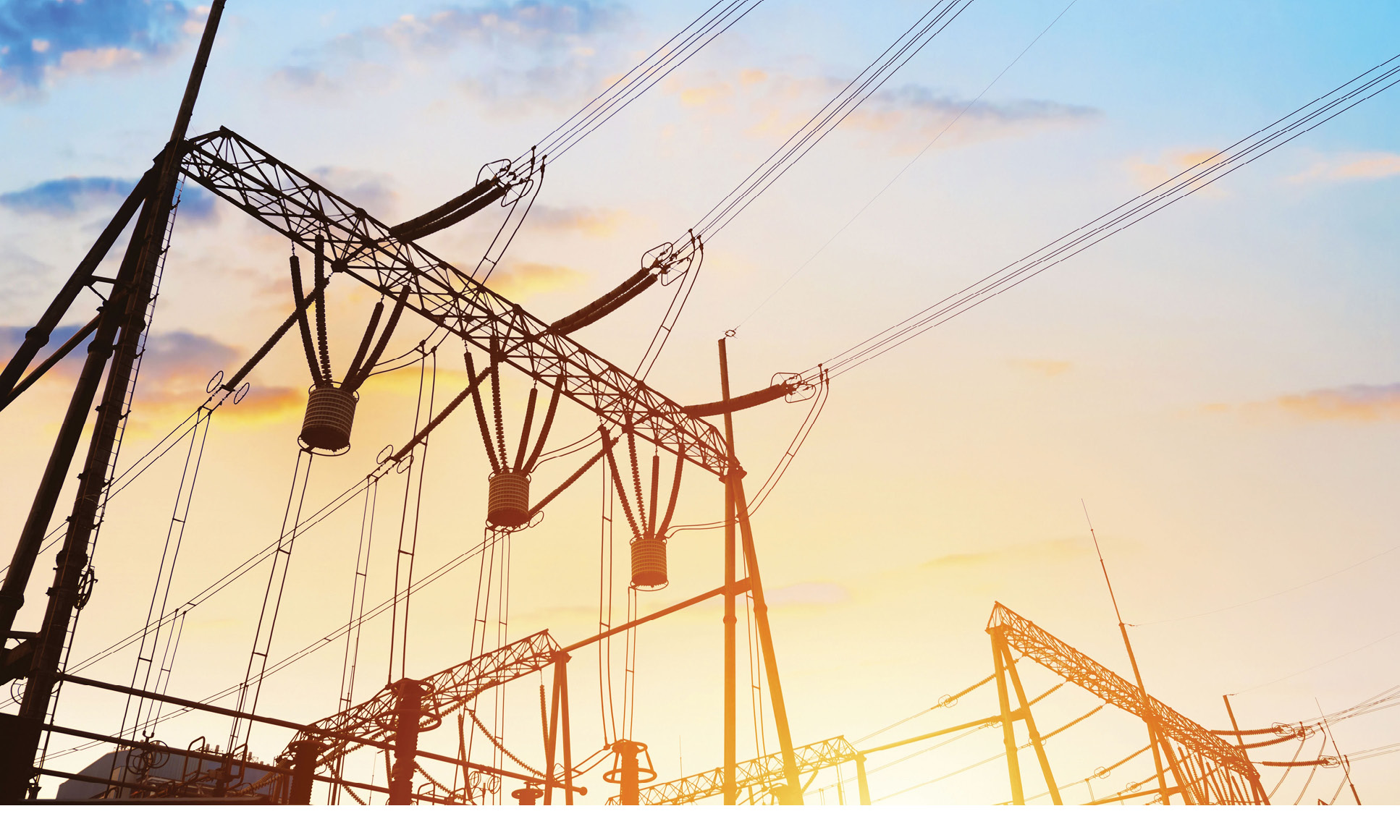

301 Moved Permanently
Over the past several years, key dynamics within the solar industry have fundamentally changed the way large photovoltaic plants are designed. As technology continues to advance - and become more cost-effective - optimal plant design continues to evolve.
Two important dynamics are driving changes in plant design: the dramatic drop in the cost of solar modules and the increasing use of trackers. Both of these are associated with increased curtailment of energy production because the former leads to larger plant sizes and they both result in greater energy production.
Battery-based storage is emerging as an innovative means of optimizing output from large-scale PV plants. Well-sized and integrated batteries can enhance profitability by making economic use of otherwise curtailed energy.
Don’t waste energy
As solar module costs plummeted over the last three to four years, it has become much more viable for plant designers to oversize the DC portion of a plant for better throughput from the AC equipment infrastructure. This is manifested in steadily rising DC/AC ratios.
In the recent past, a 1.1 DC/AC ratio was standard practice, but now, it is not uncommon to see ratios as high as 1.5. Further driving the increase in DC/AC ratios is the move from 600 V to 1,000 V DC. Though not as substantial an impact as the drop in module costs, higher DC voltages have enabled additional cost reductions in DC plants by reducing cable, fuse, combiner and DC disconnect equipment needs.
At the same time, large plants are increasingly incorporating single-axis trackers. Although this technology increases the upfront costs of the PV plant, it substantially increases the overall output by achieving a higher net harvest out of each DC module. Though increasing the DC/AC ratio effectively increases the size of the production curve, single-axis tracking widens the production curve.
Although both of these dynamics have largely improved the overall cost of PV-generated power, they have also resulted in substantial amounts of wasted energy. As a result of higher DC/AC ratios - and trackers - more of a plant’s operating time is now spent at the maximum allowed rating of the interconnection agreement. Typically, when operating in this condition, inverters are curtailing power by running off of the maximum power point cap. Thus, the DC power generated in excess of this amount is lost.
One approach to limit this loss and enhance the economic benefit is to store this excess power in a battery system. The stored energy could then be used to provide ancillary grid services, such as frequency response and ramp-rate control, or be sold at merchant rates. This combination of storage with solar to provide unique grid functionality is sometimes referred to as “soft” solar.

Because batteries represent a relatively substantial cost, it is economically prudent to size them optimally. Luckily, PV modeling tools can provide good guidance on this process. The objective should be to size the batteries small enough so as to enable them to be almost entirely charged by the wasted energy - essentially “free charging” the batteries. This approach helps to enhance profitability when selling the stored electricity.
In typical load-shifting applications, the economic value is derived from the difference between the charge and discharge costs. For example, if you are charging at $0.16/kWh and discharging at $0.20/kWh, there is an economic value of $0.04/kWh. However, when batteries are free charged with energy that would otherwise be curtailed, the economic value is driven by the absolute value of the selling price. In this example, it would be $0.20/kWh - 500% of the traditional case.
Plant design considerations
To capitalize on this available energy, a modest amount of incremental PV inverter capacity is added. Typically, this is less than 10% of what would otherwise be specified. The additional capacity is used to charge the battery through a bidirectional battery storage inverter. An alternate approach is to use a multi-port inverter that couples the PV and battery on the DC side. Such inverters are multi-stage devices and, therefore, have lower efficiencies (96% versus 98.5%) and higher costs. In our determination, running PV through a 96% inverter versus a 98.5% inverter results in substantial energy losses, so this approach results in lower project economics.
In addition to adding power-conversion resources to charge the batteries, central plant control is essential. In this case, a plant controller at the medium-voltage point of interconnection manages the grid export power and ensures it is in compliance with the interconnection agreement. In addition, this controller directs the storage inverter to charge at a rate proportional to any amount exceeding the interconnection agreement. As a bonus, charging the batteries in this way from solar makes the storage eligible for the 30% solar investment tax credit.
For example, a 20 MW (AC) project in California can comfortably charge a 2 MW/hr battery on most days of the year. In this instance, the battery system is rated for about 6% of the PV plant rating.
The available free charging of the battery is highly dependent on both plant design and seasonal irradiance factors. For the same 20 MW project in Southern California, free charging is highly variable on a month-by-month basis but has substantial capacity during the important summer months.
As the costs of modules and production continue to decrease and DC/AC ratios increase, energy storage systems can be economically and effectively integrated into large-scale PV plant designs. By taking a strategic approach to battery sizing, plant owners and operators can achieve PV systems that enhance profitability and provide essential grid services.
Once battery size is configured properly, energy waste can be minimized and the charging of cells can be achieved at little or no cost. This approach not only helps to enhance profitability when selling stored energy, but also increases the potential for renewable energy installations and systems in applications of all sizes.
Sizing Battery Storage
Avoid PV Curtailment Losses By ‘Free Charging’ Energy Storage Systems
By Chris Thompson & Jaska Tarkka
Properly sized and configured batteries and inverters can take economic advantage of energy that would otherwise be wasted.
si body si body i si body bi si body b
si depbio
- si bullets
si sh
si subhead
pullquote
si first graph
si sh no rule
si last graph